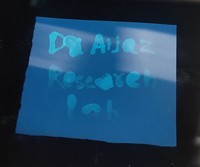Advertisement
Grab your lab coat. Let's get started
Welcome!
Welcome!
Create an account below to get 6 C&EN articles per month, receive newsletters and more - all free.
It seems this is your first time logging in online. Please enter the following information to continue.
As an ACS member you automatically get access to this site. All we need is few more details to create your reading experience.
Not you? Sign in with a different account.
Not you? Sign in with a different account.
ERROR 1
ERROR 1
ERROR 2
ERROR 2
ERROR 2
ERROR 2
ERROR 2
Password and Confirm password must match.
If you have an ACS member number, please enter it here so we can link this account to your membership. (optional)
ERROR 2
ACS values your privacy. By submitting your information, you are gaining access to C&EN and subscribing to our weekly newsletter. We use the information you provide to make your reading experience better, and we will never sell your data to third party members.
Inorganic Chemistry
Chemistry In Pictures
Chemistry in Pictures: Solid-state sand art
by Manny Morone
December 16, 2019

Shirking the need for solvents, most of PhD student JoAnna Milam-Guerrero’s reactions happen in the solid state. She and the rest of Brent Melot’s group at the University of Southern California study material properties of inorganic solids (for example, Ni3Si2O5(OH)4 is teal and Y3Fe5O12 is yellow and red). Over the course of about 800 reactions, they amassed this waste material, all of which is stable even when mixed. Ultimately, the lab hopes to use the compounds they’re making for new functional materials and catalysts. “Each vial holds about 100 reactions, making this picture 1.5 PhD students’ dissertations,” Milam-Guerrero says.
Submitted by JoAnna Milam-Guerrero
Do science. Take pictures. Win money. Enter our photo contest here.
Related C&EN Content:





Join the conversation
Contact the reporter
Submit a Letter to the Editor for publication
Engage with us on Twitter